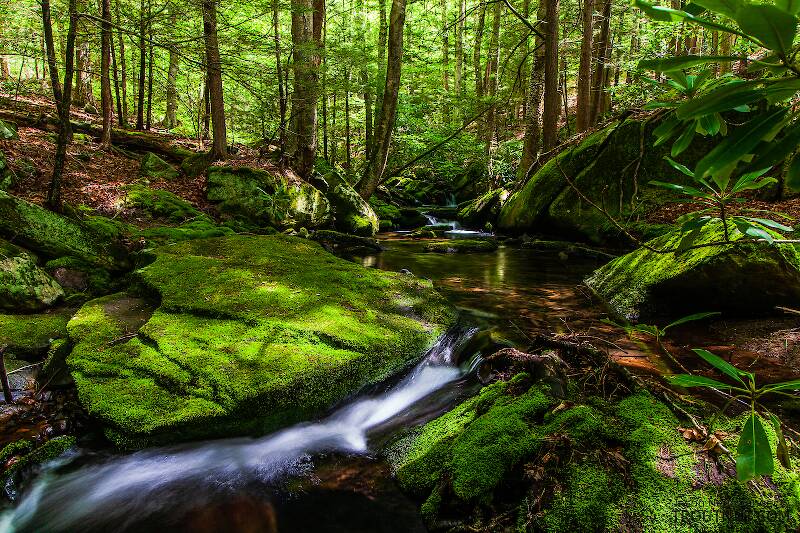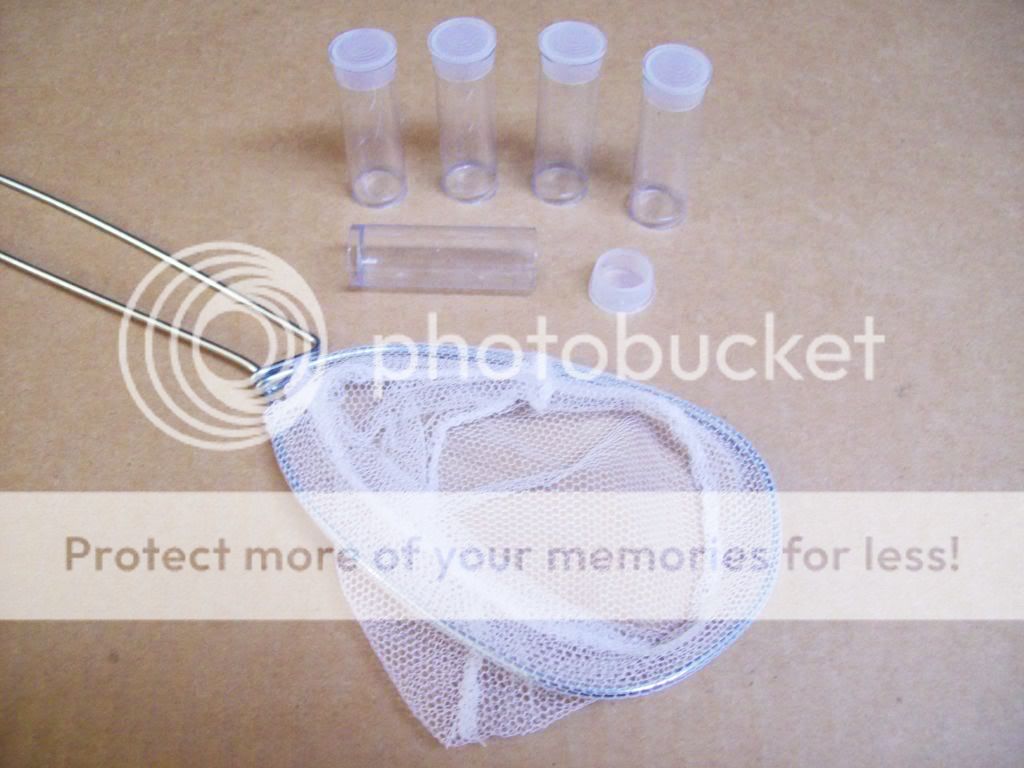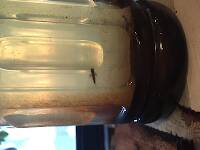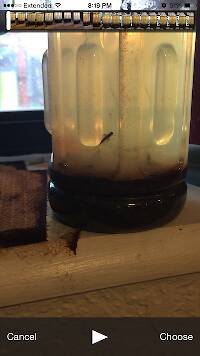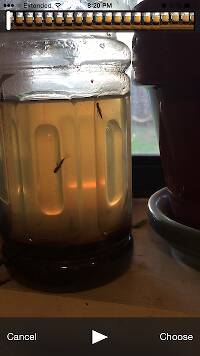
Salmonflies
Pteronarcys californica
The giant Salmonflies of the Western mountains are legendary for their proclivity to elicit consistent dry-fly action and ferocious strikes.
Featured on the forum

This specimen keys to the Epeorus albertae group of species. Of the five species in that group, the two known in Washington state are Epeorus albertae and Epeorus dulciana. Of the two, albertae has been collected in vastly more locations in Washington than dulciana, suggesting it is far more common. On that basis alone I'm tentatively putting this nymph in albertae, with the large caveat that there's no real information to rule out dulciana.

Troutnut is a project started in 2003 by salmonid ecologist Jason "Troutnut" Neuswanger to help anglers and
fly tyers unabashedly embrace the entomological side of the sport. Learn more about Troutnut or
support the project for an enhanced experience here.
Oldredbarn on Jan 4, 2011January 4th, 2011, 3:49 am EST
You are asking a very loaded question of some very obsessional folks here on this site...With all the crap we have in our vests, especially mine, if we were to ever fall over we would end up as fish food! :)
What I have done, on my favorite stream, is train the trout to hold up little signs to give me some help..."Spence...I've forgotten the latin but them little yellowish bugs are tasting mighty fine this afternoon!"
That said...If you really want to know what's happening you may have to leave the rod in the car, from time-to-time, and do a little research without the distraction of rising trout. Find a good local hatch chart and keep a streamside log...This will help you with the bugs on your homewater and over time becomes quite an interesting data base...
If you are more interested in the bugs there are kits from supply houses, but on the stream I only carry a small aquarium net and a small seine attached to two small wooden trowels...I have done a great deal of homework, usually during the winter, before I get anywhere near the stream...Know the so-called "Super-Hatches" and collect the oddities...The rub is that unless the oddities produce a "fishable hatch" you are just bug watching which is quite alright...
I have a full blown entomology kit, but it has been years since I've actually used it, and then it was more of an educational thing when I was trying to interest the nephews in the weirdness of their uncle Spence.
I forgot, I also carry a small metric ruler that I swiped from my wifes sewing room...This was payback after I found out she was "borrowing" my best pair of scissors to open button holes on some outfits she was making...I carry a notebook and water-proof pens in a plastic ziplock. This does you little good if you don't stop and write down your obsevations while they are fresh...I used to carry a small version of Borger's color chart and for all I know its still in the vest somewhere...and now a good small digital camera with a macro setting...I'm not big on color really but have been known to tie pretty good representations of egg sacks on my female spinners...They look pretty damn good to me...:)
I doubt that any of this ramble helps you, but if you have reached the obsessive stage here, then there's little help anyone can give you anyway...:)
Spence
What I have done, on my favorite stream, is train the trout to hold up little signs to give me some help..."Spence...I've forgotten the latin but them little yellowish bugs are tasting mighty fine this afternoon!"
That said...If you really want to know what's happening you may have to leave the rod in the car, from time-to-time, and do a little research without the distraction of rising trout. Find a good local hatch chart and keep a streamside log...This will help you with the bugs on your homewater and over time becomes quite an interesting data base...
If you are more interested in the bugs there are kits from supply houses, but on the stream I only carry a small aquarium net and a small seine attached to two small wooden trowels...I have done a great deal of homework, usually during the winter, before I get anywhere near the stream...Know the so-called "Super-Hatches" and collect the oddities...The rub is that unless the oddities produce a "fishable hatch" you are just bug watching which is quite alright...
I have a full blown entomology kit, but it has been years since I've actually used it, and then it was more of an educational thing when I was trying to interest the nephews in the weirdness of their uncle Spence.
I forgot, I also carry a small metric ruler that I swiped from my wifes sewing room...This was payback after I found out she was "borrowing" my best pair of scissors to open button holes on some outfits she was making...I carry a notebook and water-proof pens in a plastic ziplock. This does you little good if you don't stop and write down your obsevations while they are fresh...I used to carry a small version of Borger's color chart and for all I know its still in the vest somewhere...and now a good small digital camera with a macro setting...I'm not big on color really but have been known to tie pretty good representations of egg sacks on my female spinners...They look pretty damn good to me...:)
I doubt that any of this ramble helps you, but if you have reached the obsessive stage here, then there's little help anyone can give you anyway...:)
Spence
"Even when my best efforts fail it's a satisfying challenge, and that, after all, is the essence of fly fishing." -Chauncy Lively
"Envy not the man who lives beside the river, but the man the river flows through." Joseph T Heywood
"Envy not the man who lives beside the river, but the man the river flows through." Joseph T Heywood
Softhackle on Jan 4, 2011January 4th, 2011, 5:46 am EST
Hi,
I don't collect specimens. I observe naturals by capturing them, at times with my hat or hand when flying. I also carry a rather small, flat seive for lifting insects off the film. If I have not seen the insect before and if I can get a good photo for reference, I do so. If not, I might make notes in a small pocket sized notebook I carry. All insects are released. The thing is, in NY state, where I live, one must procure a license from the state in order to legally take/collect specimens.
Mark
I don't collect specimens. I observe naturals by capturing them, at times with my hat or hand when flying. I also carry a rather small, flat seive for lifting insects off the film. If I have not seen the insect before and if I can get a good photo for reference, I do so. If not, I might make notes in a small pocket sized notebook I carry. All insects are released. The thing is, in NY state, where I live, one must procure a license from the state in order to legally take/collect specimens.
Mark
"I have the highest respect for the skilled wet-fly fisherman, as he has mastered an art of very great difficulty." Edward R. Hewitt
Flymphs, Soft-hackles and Spiders: http://www.troutnut.com/libstudio/FS&S/index.html
Flymphs, Soft-hackles and Spiders: http://www.troutnut.com/libstudio/FS&S/index.html
Entoman on Jan 29, 2011January 29th, 2011, 3:55 pm EST
Hi Ghostdncr,
I second Spence's comments. One of the many things that separates us from the real "bugmeisters" is there's no way we're doing serious bug sampling when the fish are going nuts - our nervous systems would short circuit. I guess its genetic? Hey you scientists: Could the difference be basal? Are we another genera? BTW, consider yourself lucky you only forget the net in the car. Anybody find a Hardy Princess and a double Wheatley full of unusual dry flies? Mid 90's? On the Truckee? Was the reel attached to a rod? Can't say any more on that; too painful...
Though not nearly as effective, I just carry one of those little folding pole seines shoved in the back with my lunch or whatever ballast I've got back there to keep me from tipping over. I only break out the "Big Boy" (4ft. dowels w/ a yard of window screen type material) when the rod is safely in the boat or car. Also, a neat little seine that slips over my landing net is pretty much always in place since I became addicted to that "Ketchum Release" gadget. Besides, any fish we want to get our hands on for a trophy pic is too big for the net anyway (never stop dreaming).
A "D frame" net is handy when fishing out of a boat; the ones with heavy frames and hardwood handles. OK for scooping detritus and muck if you're careful with it, but mostly good for swooshing around through the weeds. Good for sweeping the meniscus too. It's unwieldy for aerial work but serviceable in a pinch if you don't want to run around with a butterfly net as well. Make sure its a pro model, not those cheapos that pet stores sell (the frames are too weak). Make sure the mesh isn't too fine (there are different sizes offered) beware of "EPA rated" (which means 500 microns, we want 900 or bigger) - makes it too hard to move through the water and keep from clogging. We don't care about Zooplankton anyway. Don't remember the mesh size off the top of my head, I think around 1mm?; maybe somebody else can help with that? Always give your anchor a glance when you bring it in, you never know what you'll find. That's why I like the "mushroom" kind.
Good pair of Tweezers - Not the kind your wife uses. Scientific supply houses sell them, but I prefer a good pair of jewelers tweezers used by watch repairmen. They grip well without crushing. The fine tipped ones for gabbing mayfly nymphs by the thorax and between the legs work best. The trade off is that what makes them so sensitive is they are made of "springier" carbon steel instead of stainless which means their prone to rusting if you're aren't careful. You don't want to risk damage to their legs or the delicate gills along the abdomens.
10X or 15X jewelers loop - for close inspection. The fancy German types can be quite expensive (and quite unnecessary). Go with the cheaper ones you can also find in the scientific supply houses since they can end up in the river.
Sample bottles - Scientific supply houses are again the best sources. A lot of times you can find these at the dollar stores. Most serious guys prefer the ones with the stoppers, but I've had decent luck with the plastic screw tops as long as the caps are lined. I guess evaporation is the issue.
Plastic trays - jar lids are OK, but I prefer the plastic trays you used to get Stoefers Frozen Entrees in. Stack two or three and they take up the space of a fly box. All my other bug hunting tools nestle in the top one and it all fits in a little zip up pouch I found that fits it. I think the trays are harder to find now. It seems they've all gone to black.
Boxes for adults? - Nah... Too much space taken up. Just throw them in compartments of your dry fly box to keep them company. Just remember which ones! I'm always picking mummified body parts and wings out of mine.
Cotton balls- for stuffing the tops before capping to protect the samples (stops the liquid from sloshing around). Make sure its a tight fit or the cotton ends up sloshing around with the specimens.
100 proof Gin - Best short term preservative I know (to get 'em home). Keeps 'em limber for later inspection without drying out to much. The inspector too for that matter. Seems to preserve lighter colors better than the rest (the juniper?), but that could just be my prejudice against Vodka. Never tried Tequila, but those worms seem to do OK. Anyway, Gin has other uses as well, such as the VERY short term preservation of olives. In case you want to go poking around your stuff well into the century, better go with the ethyl alcohol strengths scientists recommend. Some say 70%, some higher. The truth is the sooner the bugs go in the better for the long term health of your collection. Another handy thing is a squeeze bottle with a goose neck, so you don't waste any precious elixir pouring it into those little bottles.
Paper strips and #2 pencils - For the What, Where, and When. I like card stock (won't curl up). Cut your own to fit. No ink! You'll come back later and find your samples floating in literal "Bombay Blue Sapphire" and the labels will be pretty hard to read. Another option is to put those little round price stickers on the lid with a number to correspond to info on a separate index. Good idea, if you want to record more fishing info or have a large collection. I use both together because I'm afraid of losing the index.
Mark -
I've heard that about collecting, but thought it was urban legend! We have laws out here to prevent collecting for commercial purposes (bait stores) in some of our waters, but taking a few samples for observation and study? Wow! What if they fly into the car when your leaving? What if they just happened to crawl into some open bottles you had rolling around. How'd the lids get on 'em? I don't know Officer, honest!! God forbid you get caught with a few samples while you're washing the roadkill off your rig. Are bug zappers illegal too? Most cabins along our rivers out here have 'em.
Assuming game wardens out there are actually enforcing it, what's the fine and how much is the license? Or, do you have to be part of an official science study to get one?
Kurt
I second Spence's comments. One of the many things that separates us from the real "bugmeisters" is there's no way we're doing serious bug sampling when the fish are going nuts - our nervous systems would short circuit. I guess its genetic? Hey you scientists: Could the difference be basal? Are we another genera? BTW, consider yourself lucky you only forget the net in the car. Anybody find a Hardy Princess and a double Wheatley full of unusual dry flies? Mid 90's? On the Truckee? Was the reel attached to a rod? Can't say any more on that; too painful...
Though not nearly as effective, I just carry one of those little folding pole seines shoved in the back with my lunch or whatever ballast I've got back there to keep me from tipping over. I only break out the "Big Boy" (4ft. dowels w/ a yard of window screen type material) when the rod is safely in the boat or car. Also, a neat little seine that slips over my landing net is pretty much always in place since I became addicted to that "Ketchum Release" gadget. Besides, any fish we want to get our hands on for a trophy pic is too big for the net anyway (never stop dreaming).
A "D frame" net is handy when fishing out of a boat; the ones with heavy frames and hardwood handles. OK for scooping detritus and muck if you're careful with it, but mostly good for swooshing around through the weeds. Good for sweeping the meniscus too. It's unwieldy for aerial work but serviceable in a pinch if you don't want to run around with a butterfly net as well. Make sure its a pro model, not those cheapos that pet stores sell (the frames are too weak). Make sure the mesh isn't too fine (there are different sizes offered) beware of "EPA rated" (which means 500 microns, we want 900 or bigger) - makes it too hard to move through the water and keep from clogging. We don't care about Zooplankton anyway. Don't remember the mesh size off the top of my head, I think around 1mm?; maybe somebody else can help with that? Always give your anchor a glance when you bring it in, you never know what you'll find. That's why I like the "mushroom" kind.
Good pair of Tweezers - Not the kind your wife uses. Scientific supply houses sell them, but I prefer a good pair of jewelers tweezers used by watch repairmen. They grip well without crushing. The fine tipped ones for gabbing mayfly nymphs by the thorax and between the legs work best. The trade off is that what makes them so sensitive is they are made of "springier" carbon steel instead of stainless which means their prone to rusting if you're aren't careful. You don't want to risk damage to their legs or the delicate gills along the abdomens.
10X or 15X jewelers loop - for close inspection. The fancy German types can be quite expensive (and quite unnecessary). Go with the cheaper ones you can also find in the scientific supply houses since they can end up in the river.
Sample bottles - Scientific supply houses are again the best sources. A lot of times you can find these at the dollar stores. Most serious guys prefer the ones with the stoppers, but I've had decent luck with the plastic screw tops as long as the caps are lined. I guess evaporation is the issue.
Plastic trays - jar lids are OK, but I prefer the plastic trays you used to get Stoefers Frozen Entrees in. Stack two or three and they take up the space of a fly box. All my other bug hunting tools nestle in the top one and it all fits in a little zip up pouch I found that fits it. I think the trays are harder to find now. It seems they've all gone to black.
Boxes for adults? - Nah... Too much space taken up. Just throw them in compartments of your dry fly box to keep them company. Just remember which ones! I'm always picking mummified body parts and wings out of mine.
Cotton balls- for stuffing the tops before capping to protect the samples (stops the liquid from sloshing around). Make sure its a tight fit or the cotton ends up sloshing around with the specimens.
100 proof Gin - Best short term preservative I know (to get 'em home). Keeps 'em limber for later inspection without drying out to much. The inspector too for that matter. Seems to preserve lighter colors better than the rest (the juniper?), but that could just be my prejudice against Vodka. Never tried Tequila, but those worms seem to do OK. Anyway, Gin has other uses as well, such as the VERY short term preservation of olives. In case you want to go poking around your stuff well into the century, better go with the ethyl alcohol strengths scientists recommend. Some say 70%, some higher. The truth is the sooner the bugs go in the better for the long term health of your collection. Another handy thing is a squeeze bottle with a goose neck, so you don't waste any precious elixir pouring it into those little bottles.
Paper strips and #2 pencils - For the What, Where, and When. I like card stock (won't curl up). Cut your own to fit. No ink! You'll come back later and find your samples floating in literal "Bombay Blue Sapphire" and the labels will be pretty hard to read. Another option is to put those little round price stickers on the lid with a number to correspond to info on a separate index. Good idea, if you want to record more fishing info or have a large collection. I use both together because I'm afraid of losing the index.
Mark -
I've heard that about collecting, but thought it was urban legend! We have laws out here to prevent collecting for commercial purposes (bait stores) in some of our waters, but taking a few samples for observation and study? Wow! What if they fly into the car when your leaving? What if they just happened to crawl into some open bottles you had rolling around. How'd the lids get on 'em? I don't know Officer, honest!! God forbid you get caught with a few samples while you're washing the roadkill off your rig. Are bug zappers illegal too? Most cabins along our rivers out here have 'em.
Assuming game wardens out there are actually enforcing it, what's the fine and how much is the license? Or, do you have to be part of an official science study to get one?
Kurt
"It's not that I find fishing so important, it's just that I find all other endeavors of Man equally unimportant... And not nearly as much fun!" Robert Traver, Anatomy of a Fisherman
Quick Reply
Related Discussions
Topic
Replies
Last Reply
Re: I need your help to get some specimens of Caecidotea (Freshwater isopods).
In General Discussion by Leonardo
In General Discussion by Leonardo
4
Jun 1, 2016
by Crepuscular
by Crepuscular
2
May 22, 2009
by Konchu
by Konchu

